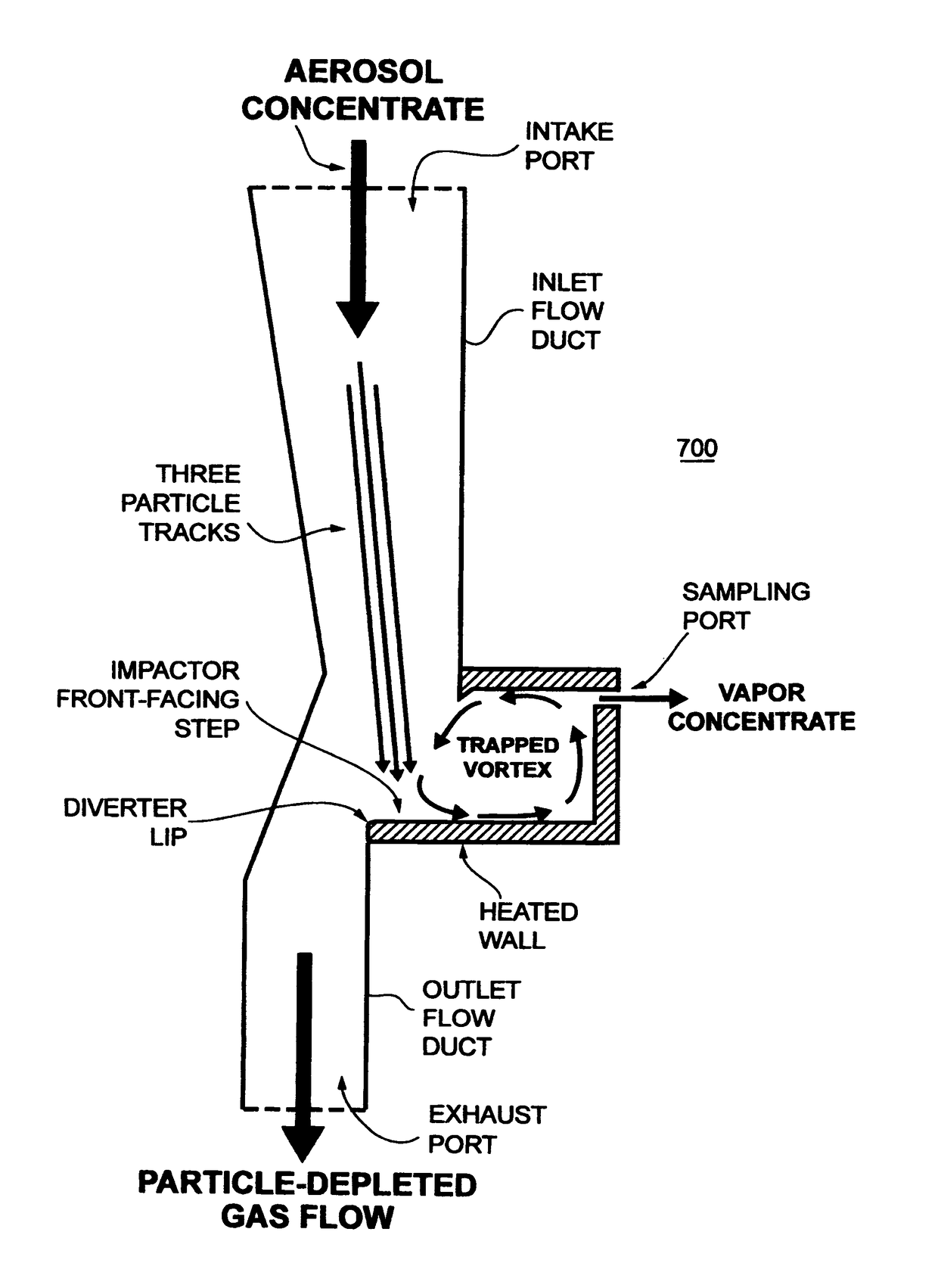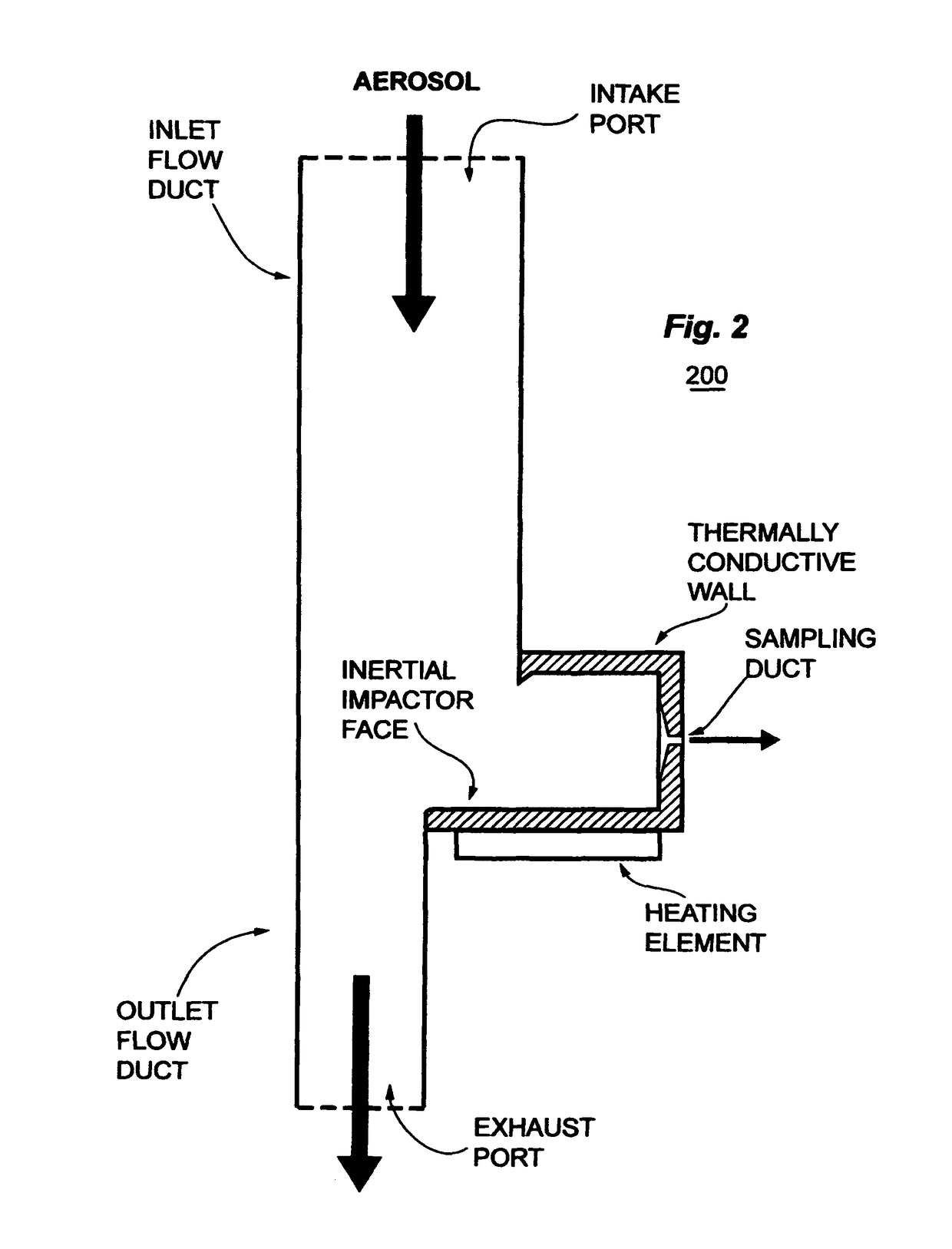Trapped vortex particle-to-vapor converter
a vortex particle and converter technology, applied in the field of particle analysis apparatus and methods, can solve the problems of not being able to successfully aspirate under the conditions described, sensor not capturing particles, and particle not being sampled, etc., to achieve small or negligible pressure drop, convenient operation, and low flow resistance
- Summary
- Abstract
- Description
- Claims
- Application Information
AI Technical Summary
Benefits of technology
Problems solved by technology
Method used
Image
Examples
Embodiment Construction
[0052]Referring to the figures, wherein like reference numerals refer to like components in the various views, there is illustrated a trapped vortex apparatus for vapor concentration and sampling, wherein selected embodiments are generally denominated 100, 200, 700, 1300 or 1400 herein.
[0053]An effective screening system for threat compounds such as explosives (as well as chemical hazards and illicit substances) must be able to collect, concentrate, and analyze trace samples quickly and accurately. Analysis is improved by selectively separating particles from a carrier gas stream in a trapped vortex or on an impactor surface within a trapped vortex cavity, and then heating the particles to strip off any volatile constituents for analysis in a small resident volume of gas trapped in a stable cyclonic eddy or vortex.
[0054]FIG. 1 is a schematic view of a first embodiment 100 of an aerosol impactor with trapped vortex solid-to-vapor concentrator.
[0055]An intake port forms the mouth of a...
PUM
| Property | Measurement | Unit |
|---|---|---|
| flow rate | aaaaa | aaaaa |
| flow rate | aaaaa | aaaaa |
| volume | aaaaa | aaaaa |
Abstract
Description
Claims
Application Information
 Login to View More
Login to View More - R&D
- Intellectual Property
- Life Sciences
- Materials
- Tech Scout
- Unparalleled Data Quality
- Higher Quality Content
- 60% Fewer Hallucinations
Browse by: Latest US Patents, China's latest patents, Technical Efficacy Thesaurus, Application Domain, Technology Topic, Popular Technical Reports.
© 2025 PatSnap. All rights reserved.Legal|Privacy policy|Modern Slavery Act Transparency Statement|Sitemap|About US| Contact US: help@patsnap.com



